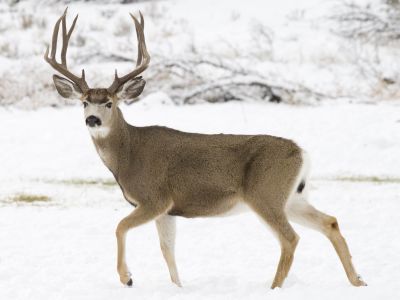M-ODHE-Mule Deer

Mule Deer
Odocoileus hemionus
- Phylum: Craniata
- Class: Mammalia
- Order: Artiodactyla
- Family: Cervidae
The mule deer (Odocoileus hemionus) is a deer indigenous to western North America; it is named for its ears, which are large like those of the mule.
General Information
Key Habitat Features
Broad array of habitats in mountains and lowlands, including forests and woodlands, forest edges, shrublands, grasslands with shrubs, riparian areas.
Objectives
Minimize disturbance and ensure that activities do not disrupt behaviour of adult females and young during the fawning season.
Maintain security cover.
Maintain snow interception cover in areas used during winter conditions.
Planning and Operational Measures
All Activities
Identify key habitat features using appropriate measures (i.e. QP direction, desktop review, field confirmation, etc) and plan activities within the operating area accordingly.
Minimize opening size to maintain access to security and thermal cover
Time works such that they occur outside of the critical timing window.
Apply the appropriate survey and setback requirements for WHFs within identified habitat. (Refer to section 1.9 of the EPMG for additional guidance on WHFs).
All Activities
Timing considerations when working within identified habitat:
Avoid disturbance and/or clearing activities within know birthing areas during the critical timing window from 15 May to 15 July.
Where an application area is within a NEBC UWR for Mule Deer, please refer to the EIMS summary for that Order. Proponents are required to adhere to the guidance provided in that summary, including any relevant timing considerations.
Linear Features
All
Avoid creation of linear features within known birthing areas.
Upon completion of the activity, undertake the following measures to encourage re-establishment of the pre-disturbance ecological trajectory:
deactivate unnecessary access corridors,
undertake measures to control access,
promote natural or assisted regeneration.